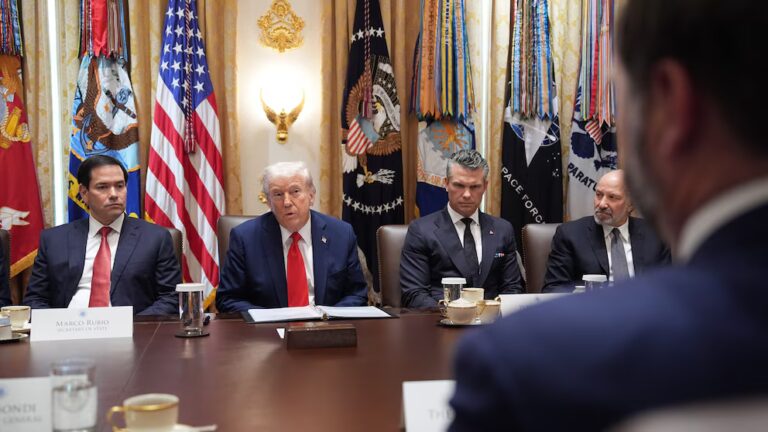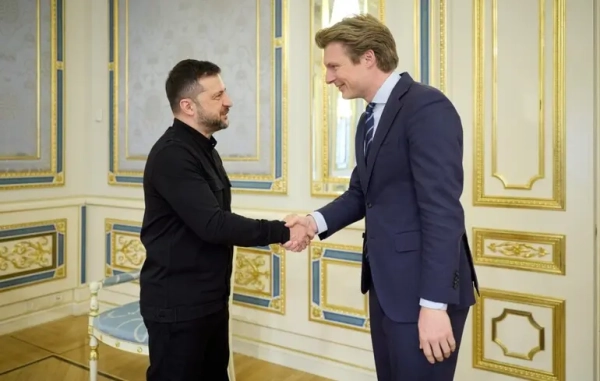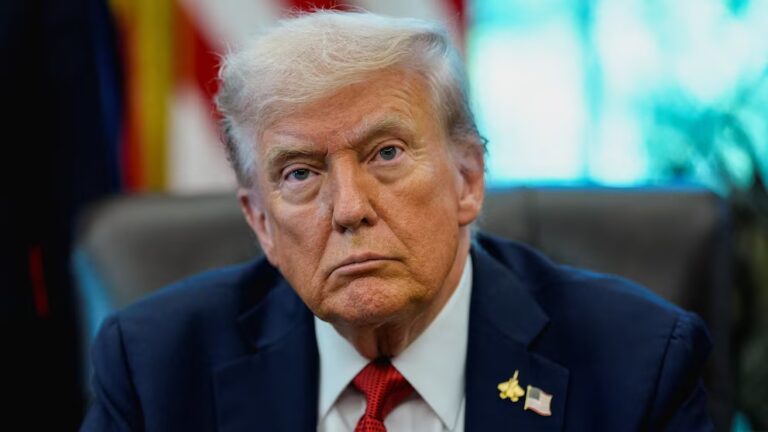
On Friday, President Donald Trump dissed the armed officer who stalled as he reportedly heard shots inside Marjory Stoneman Douglas High School, waiting outside as a gunman killed 17 people in the course of just minutes instead of charging in with his own gun.
“Look, you had one guard. He didn’t turn out to be too good, I will tell you that,” Trump said at a speech on Friday in front of the annual Conservative Political Action Committee. “He turned out to be not good. He was not a credit to law enforcement. That I can tell you. That I can tell you.”
Trump said the problem was one guy with a gun wasn’t enough, pointing out that it’s “a big, big school. You would have to have 150 real guns.”
Trump’s response to the officer, who has since resigned, speaks to a scenario where it seems like a massacre should have been stopped: An armed deputy was on the scene, and he could hear gunfire.
Yet he didn’t go after the gunman. According to Broward County Sheriff Scott Israel, the deputy, Scot Peterson, waited outside the building for four to six minutes even though he could “clearly” hear gunfire. Peterson quit after he was suspended without pay.
“Devastated. Sick to my stomach. There are no words. These families lost their children. We lost coaches. I’ve been to the funerals,” Israel said at a press conference on Thursday. Asked what the officer should have done, Israel responded, “Went in. Addressed the killer. Killed the killer.”
This is more than just another horrific detail about a mass shooting that killed 17 people; it also directly contradicts the notion that simply putting a bunch of armed personnel in schools will stop shooters — the “good guy with a gun” theory.
As National Rifle Association CEO Wayne LaPierre put it following the mass shooting at Sandy Hook Elementary School in Newtown, Connecticut, in 2012, “The only way to stop a bad guy with a gun is with a good guy with a gun.” Basically, if more people are armed, they can stop violence before it gets worse or prevent it altogether.
The latest revelations about the officer’s failure to act in the Florida shooting are a devastating example of this theory not working as planned. But the evidence suggests this shouldn’t be too surprising. Even when people are armed, they often fail to properly respond to a mass shooting.
Stopping a mass shooting is hard, even with firearm training
Multiple simulations have demonstrated that most people, if placed in an active shooter situation while armed, will not be able to stop the situation, and may in fact do little more than get themselves killed in the process.
This video, from ABC News, shows one such simulation, in which people repeatedly fail to shoot an active shooter before they’re shot:
As Chris Benton, a police investigator in Pennsylvania, told ABC News, “Video games and movies, they glorify gunfights. [People] get that warped sense that this is true — this video game is exactly what I can do in real life. That’s not reality.”
The Daily Show also put this theory to the test in another — more comedic — simulation segment. Jordan Klepper, who was a correspondent with the show at the time, trained on the basics of using a firearm and got a concealed carry permit that was valid in 30 states. Then he participated in mass shooting simulations to see how he would hold up in such a scenario.
He failed — miserably. In his final test, which simulated a school shooting, he shot an unarmed civilian, and he was shot multiple times by the active shooters and even law enforcement, who mistook him for the bad guy. He never took down the active shooters.
The fundamental problem is that mass shootings are traumatizing, terrifying events. Without potentially dozens or even hundreds of hours in training, most people are not going to be able to control their emotions and survey the scene in time to quickly and properly respond.
“There’s never enough training,” Coby Briehn, a senior instructor at Advanced Law Enforcement Rapid Response Training, told Klepper. “You can never get enough.”
The FBI’s analysis of active shooters between 2000 and 2013 has another relevant data point: “Law enforcement suffered casualties in 21 (46.7%) of the 45 incidents where they engaged the shooter to end the threat.” These are people trained to do this kind of thing full time, and nearly half were wounded or killed.
None of that is to say that a “good guy with a gun” won’t ever be able to stop a shooter. We have seen some high-profile cases in which that happened. But the bulk of the findings, from news investigations to the FBI’s report to The Daily Show, suggest that this idea is often going to play out very differently than supporters like President Trump envision — and sometimes could lead to more innocent people getting caught in the chaotic crossfire.
If America wants to confront its gun violence problem, the research suggests it should look to reducing the number of guns in circulation — not putting more armed people into schools.
Sourse: vox.com






